Great news from a fundamental perspective for Bitcoin as it hits a new hashrate high and increases network security.
While the price of BTC is in limbo as it decides which way to go, the computing power of the network continues to grow, showing that there is continued interest from miners to perform block validation activity.
In addition, there is other on-chain data that indicates great strength for bitcoin’s blockchain infrastructure.
Let’s look at the details together.
Summary
Bitcoin Hashrate Marks New ATH
On May 2, 2023, Bitcoin’s hashrate, or the measure of the network’s computing power, reached a new high of 491.15 EH/s at the top of block 787,895.
The computational power of the network has never been higher: during the month of April, we witnessed 5 different occasions when this number dropped below 300 EH/s, but recovered in a short time.
With more and more miners contributing computational power to resolve and include blocks, the network can boast unprecedented security, establishing itself as the most inviolable blockchain in the world.
According to a report by analyst Sam Wouter of River Financial, Bitcoin could climb even higher, reaching the first zetta hash (one trillion hashes per second) by 2025.
The prediction was made taking into account that the computing power of the bitcoin network follows its own logic and is minimally influenced by external factors such as the macroeconomic outlook of the markets, so it could continue to grow even in a prolonged bear market situation.
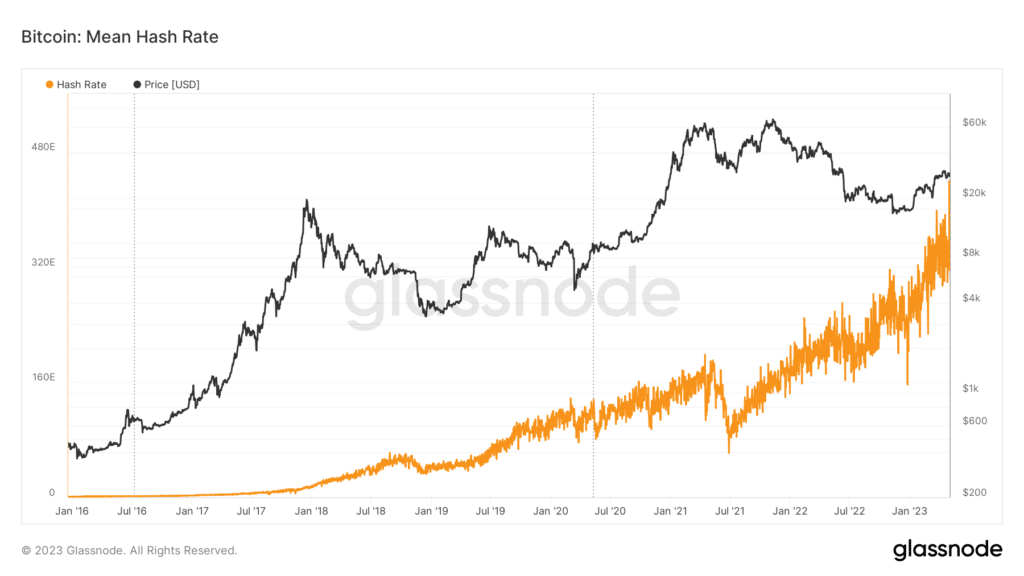
Meanwhile, as the bitcoin network becomes more secure and impenetrable, the average time for each block in April was slightly above the canonical ten-minute average. This translates to a likely decrease in network difficulty of between 1.22 percent and 2 percent.
The “difficulty adjustment” occurs, on average, every two weeks, and is designed to rebalance the average validation time for each block to bring it back to around ten minutes.
Above-average times, as in the current case, can cause problems for the mempool: yesterday morning, the number of unconfirmed transactions reached a staggering 240,000 as the mempool space filled up.
In about 1 day, the difficulty will change, so we expect to see a reduction in the number of transactions in the mempool waiting to be included in a block.
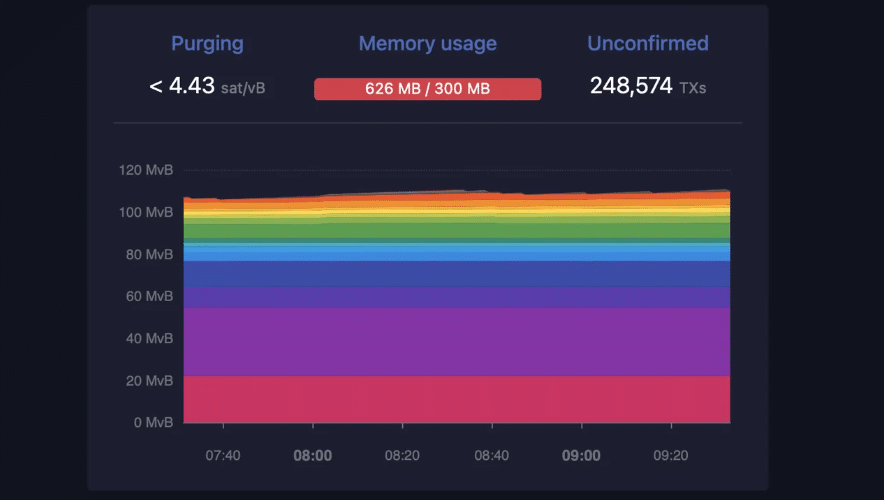
The World’s Largest Bitcoin Mining Pools
Bitcoin’s network hash rate continues to grow and reach new heights, but have you ever wondered who is contributing the most to this number?
Many years ago, those mining could use hardware with a mining capacity of a few TH/s units to ensure a decent profit from this activity.
However, the sudden rise in the price of BTC in recent years has created conditions where competition has become very high on this front, attracting new players to the world of mining with increasingly powerful and sophisticated hardware.
If in 2018 a miner could make $3-4 profit with only 1 TH/s, today he or she would not even be able to make 50 cents on the dollar.
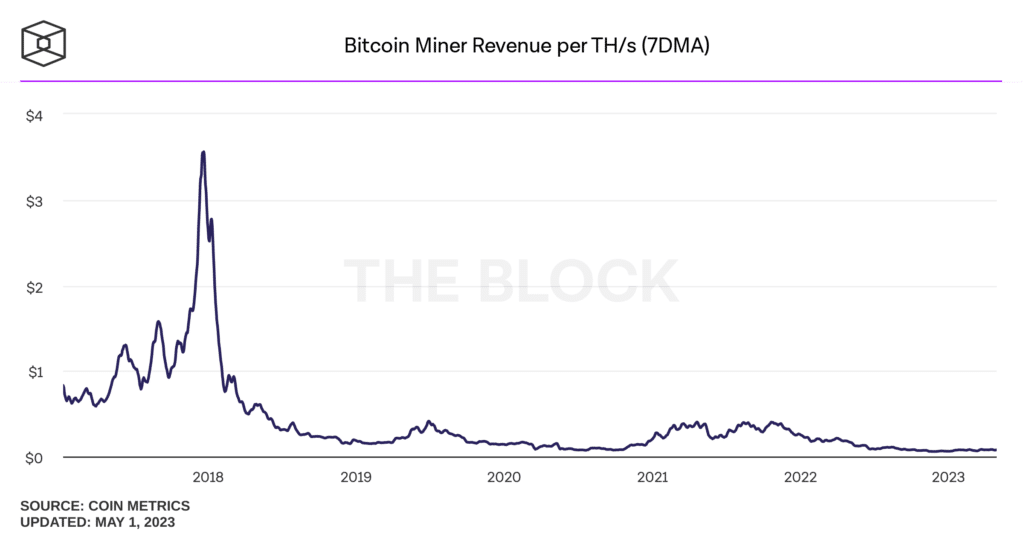
Increased competition to use faster and faster hardware inevitably led to a situation where the small miner using a “home” GPU would never be able to validate a block and win the block reward of 6.25 BTC.
In order to compete with the rest of the world, individuals had to move to large mining pools that together handle most of the bitcoin hashrate.
The way it works is simple: each user connects to the mining pool of his or her choice, and when that user wins a block reward, the reward is shared proportionally with all participants in the pool.
The biggest mining pools in the world are Foundry, AntPool, Binance Pool, F2Pool and ViaBTC.
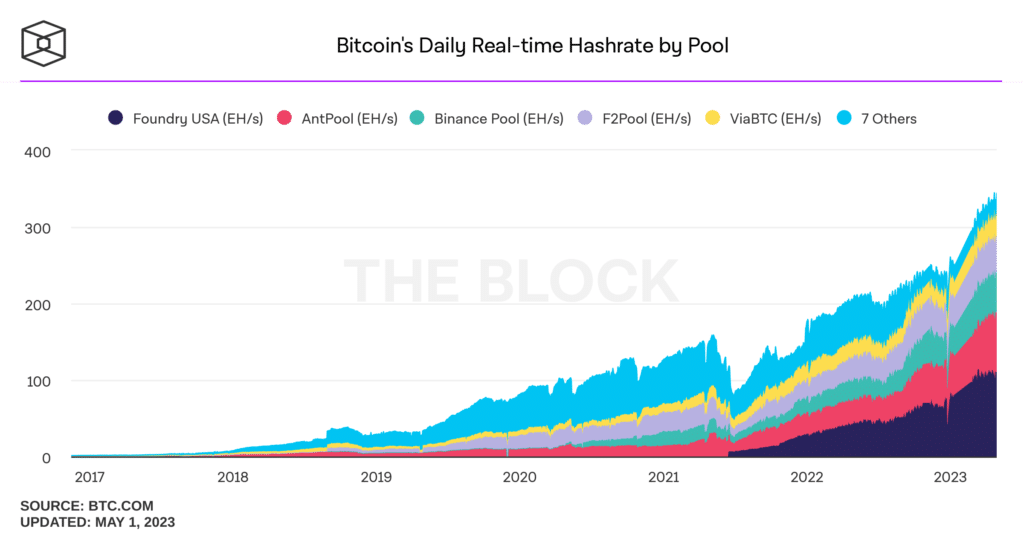
On-chain data shows network strength: beyond bitcoin hashrate data
Beyond bitcoin’s hashrate, which is touching increasingly positive levels, there are other data points that show an increasingly strong bitcoin network and bode well for the future.
One figure in particular has reached new all-time highs: the number of daily transactions executed on the bitcoin blockchain.
This number has surpassed the staggering figure of 500,000 transactions executed in 24 hours, surpassing the record set in December 2017 during the bull run in bitcoin prices and the rest of the cryptocurrency market.
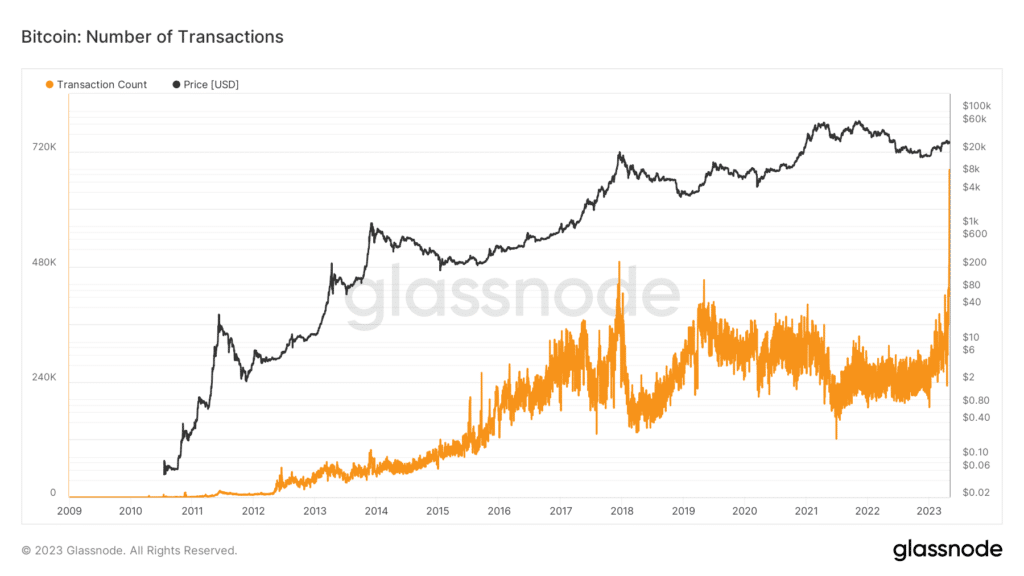
The reason for such a rapid increase in the number of daily transactions is actually not due to simple transitions where BTC is sent from one address to another, but to the number of inscriptions performed on the Ordinals protocol, which is used to create NFT-like digital artifacts on the Bitcoin blockchain.
Ordinals has become increasingly popular in recent months, driving a large amount of activity to inscribe individual satoshi and create non-fungible versions of bitcoin, effectively increasing the number of transactions executed daily.




